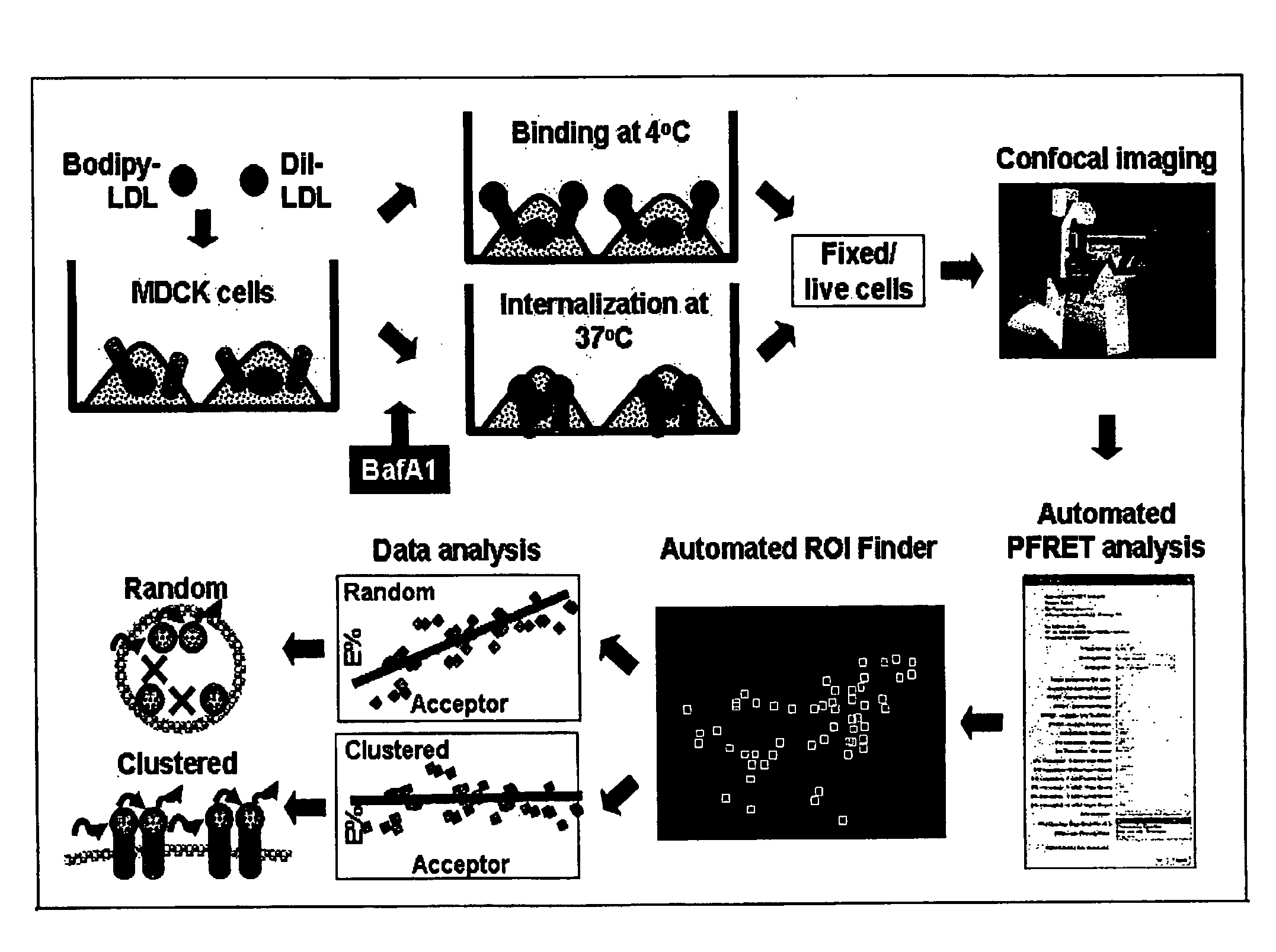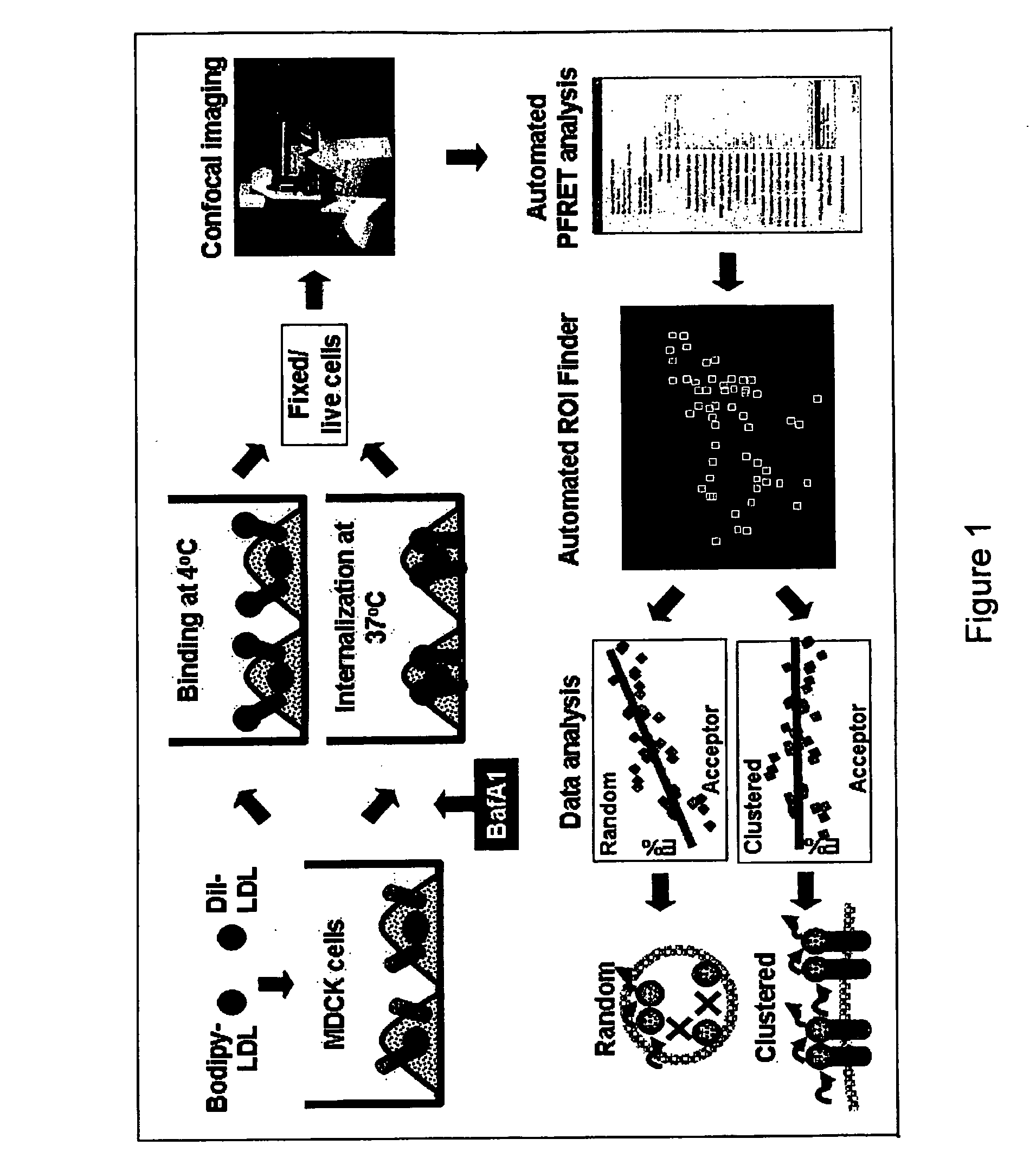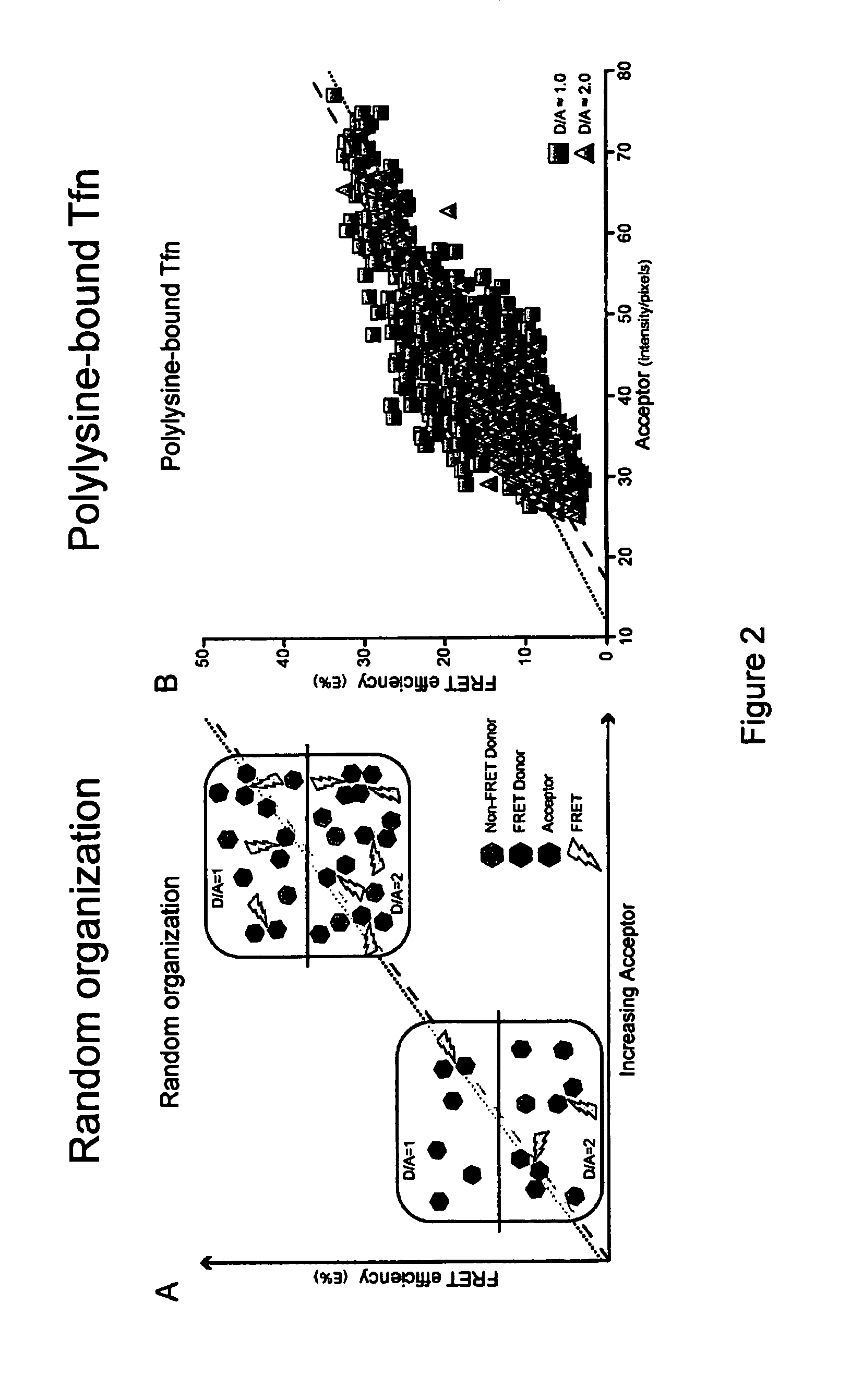Fret-based assay for screening modulators of receptor cycling
a receptor and assay technology, applied in the field of receptor/ligand complexes intracellular trafficking, can solve the problems of significant challenges in the development of therapeutic reagents, and achieve the effect of modulating intracellular ldl-c release and ldl-r levels, and lowering plasma cholesterol
- Summary
- Abstract
- Description
- Claims
- Application Information
AI Technical Summary
Benefits of technology
Problems solved by technology
Method used
Image
Examples
examples
Culture of MDCK Cells on Filter Inserts
[0074]MDCK cells were grown to confluence in 100-mm cell culture dishes, trypsinized, centrifuged, and resuspended in DMEM / 10% fetal bovine serum / Pen-Strep. Approximately 300,000 cells were placed on top of an inverted Transwell Clear insert (Corning Costar, Cambridge, Mass.), which allowed for their direct visualization through a coverslip using an inverted microscope. After 3-4 days in culture, the fully polarized monolayer was immediately used according to internalization protocols. Cellular polarity was established by the reduced apical uptake and basolateral staining of apically internalized fluorophore-labeled Tfn (<5%), using confocal microscopy.
Fluorophore-Labeled Ligands
[0075]Bodipy- and DiI-labeled LDL was obtained from Invitrogen (Carlsbad, Calif.).
Internalization of Fluorophore-labeled Ligands
[0076]Inserts with a fully polarized MDCK cell monolayer were washed with PBS, equilibrated with MEM / HEPES / BSA at 37° C., and pretreated 15 mi...
PUM
| Property | Measurement | Unit |
|---|---|---|
| time | aaaaa | aaaaa |
| time | aaaaa | aaaaa |
| time | aaaaa | aaaaa |
Abstract
Description
Claims
Application Information
 Login to View More
Login to View More - R&D
- Intellectual Property
- Life Sciences
- Materials
- Tech Scout
- Unparalleled Data Quality
- Higher Quality Content
- 60% Fewer Hallucinations
Browse by: Latest US Patents, China's latest patents, Technical Efficacy Thesaurus, Application Domain, Technology Topic, Popular Technical Reports.
© 2025 PatSnap. All rights reserved.Legal|Privacy policy|Modern Slavery Act Transparency Statement|Sitemap|About US| Contact US: help@patsnap.com



